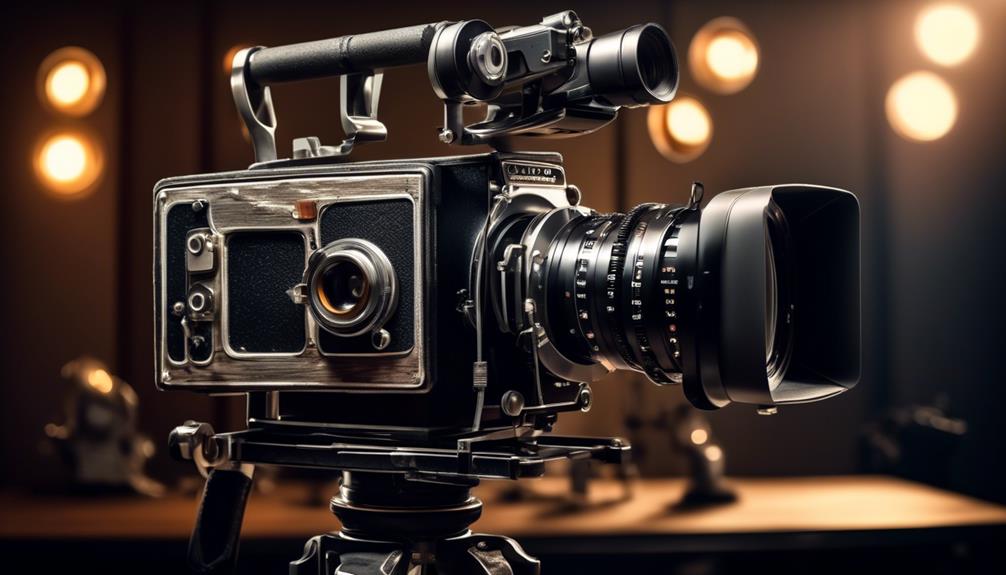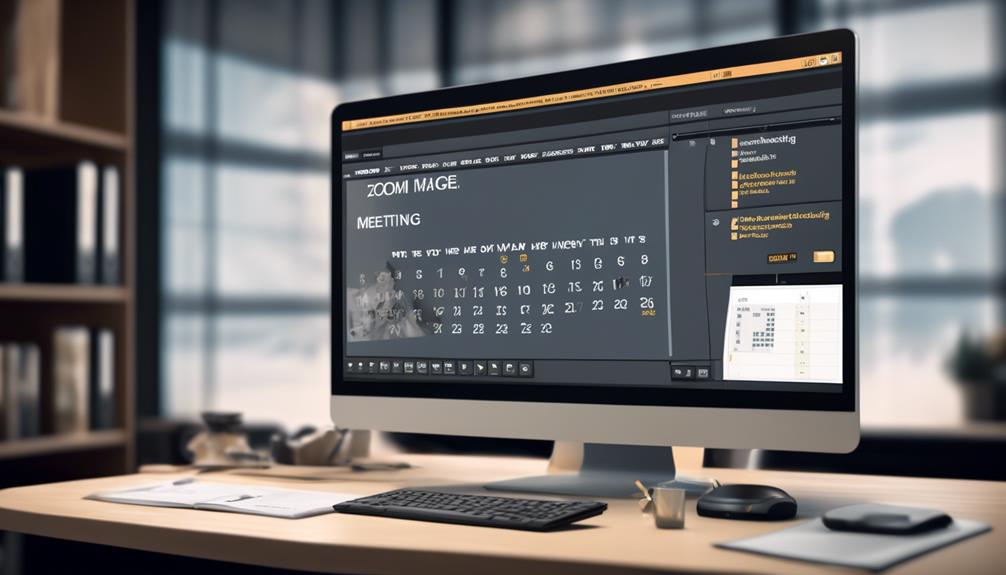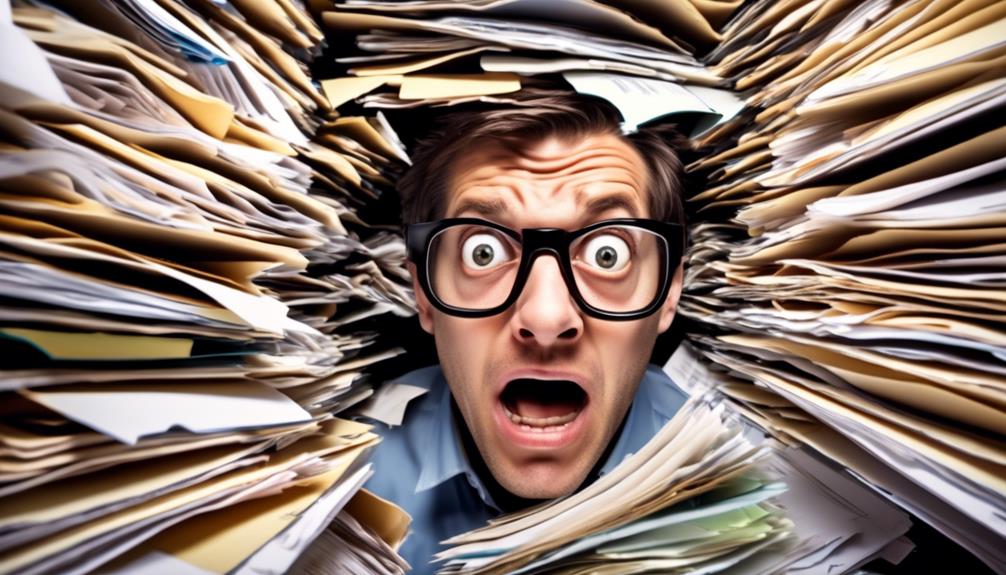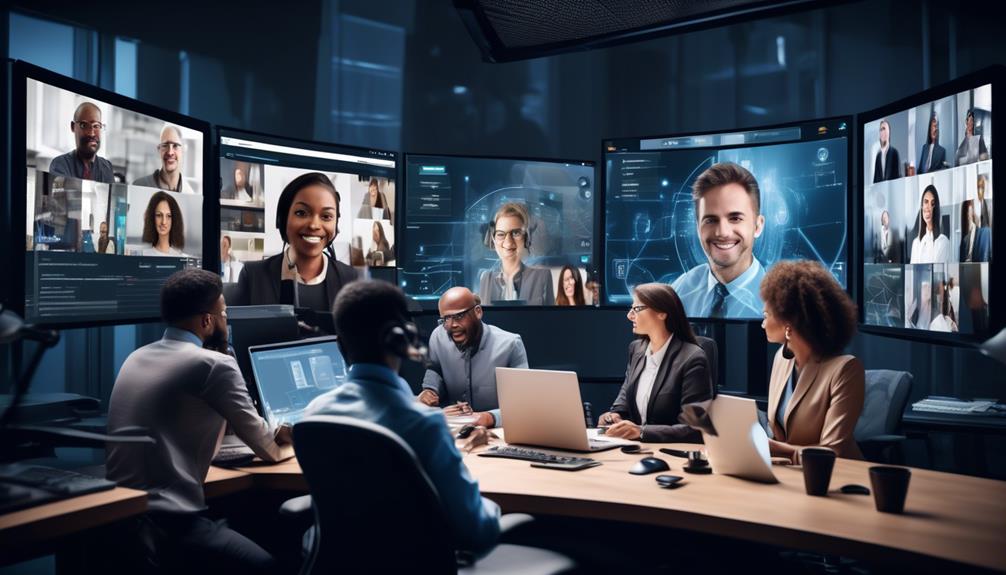So, you’re interested in the type of camera used to capture those cinematic masterpieces on the big screen, huh? Well, let me tell you, the world of movie cameras has evolved significantly over the years, and it’s not just about the traditional film cameras anymore.
From high-end digital cinematography cameras with large sensors and low compression ratios to low-cost consumer and prosumer cameras that have made their mark in independent filmmaking, there's a wide array of options out there.
But before we dive into the specifics, it's essential to understand the factors that filmmakers consider when choosing the right camera for their projects.
Key Takeaways
- Professional movie cameras, such as the Canon Cinema EOS, Blackmagic URSA, and Sony CineAlta, are designed to meet the demanding requirements of modern filmmaking.
- When choosing a cinema camera, factors to consider include image quality, sensor size, interchangeable lens options, resolution, frame rates, initial investment, and hidden costs.
- Popular video cameras for filming include the Blackmagic Pocket Cinema Camera, Canon EOS 5D Mark II, and Sony Alpha series mirrorless cameras, offering compact size, UHD image capabilities, and advanced features.
- Professional filmmakers should consider factors like dynamic range, recording options, battery life, support systems, overall image quality, adaptability to shooting conditions, and balancing technical specifications with creative requirements and budget constraints.
Types of Professional Movie Cameras
Discussing the types of professional movie cameras, we explore the cutting-edge features and technical capabilities that cater to the demanding needs of digital cinematography. These high-end cameras, such as the Canon Cinema EOS series, boast large sensors that capture stunning imagery with high dynamic range, essential for achieving the cinematic look.
The ability to select frame rates empowers filmmakers to control the motion blur and capture fast-paced action sequences with precision. Additionally, these cameras offer low compression ratios, ensuring that the video recording maintains the highest possible quality.
The Blackmagic URSA, another contender in this category, provides versatile lens mount options, accommodating a wide range of cinematic lenses for diverse creative choices. These professional movie cameras, including the Sony CineAlta series, are designed to deliver unparalleled performance, meeting the rigorous demands of modern-day filmmaking.
Each camera presents unique advantages, enabling filmmakers to choose the most suitable option based on specific project requirements, whether it's capturing breathtaking landscapes or intense action scenes.
Factors to Consider When Choosing a Cinema Camera

Considering the myriad of options available, selecting the right cinema camera involves assessing key factors essential to achieving the desired cinematic results.
The image quality and sensor size play a crucial role in capturing cinematic footage. Professional models often feature large CMOS sensors, providing an expansive dynamic range and superior image clarity.
Interchangeable lenses are essential for achieving various visual effects, making lens mount options a vital consideration.
Additionally, resolution and frame rates are pivotal technical aspects, especially when aiming to shoot feature films or high-quality video content. Pocket video cameras offer impressive portability, but they may have limitations in terms of dynamic range and interchangeable lenses.
When making this choice, it's important to consider both the initial investment and potential hidden costs associated with accessories, rental fees, and post-production requirements.
Lastly, assessing a camera's ability to deliver a cinematic look through factors like dynamic range, color sampling, recording formats, and practical considerations such as form factor and ease of use is essential for any filmmaker striving for mastery.
Popular Video Cameras for Filming
In the realm of filmmaking, the choice of video cameras is a critical decision that significantly impacts the visual quality and creative possibilities of the final product.
When it comes to popular video cameras for filming, the Blackmagic Pocket Cinema Camera has gained traction among filmmakers seeking cinematic quality. Known for its compact size and impressive UHD image capabilities, it offers filmmakers a diverse range of options to suit their specific needs, whether it's capturing breathtaking landscapes or high-speed action sequences.
The Canon EOS 5D Mark II, revered for its groundbreaking video capabilities, has been instrumental in revolutionizing the use of DSLRs for motion picture production. Its advanced features and exceptional image quality have made it a popular choice among filmmakers.
Mirrorless cameras, such as the Sony Alpha series, have also emerged as popular choices for filmmakers. Their lightweight design and advanced features like global shutter and raw format recording enhance the overall cinematic quality of the footage. These cameras provide the tools necessary for creating visually stunning and compelling motion pictures.
As technology continues to advance, these popular video cameras for filming continue to evolve and improve, offering even more possibilities for filmmakers to explore and push the boundaries of their creativity.
Camera Choices for Professional Filmmakers

Professional filmmakers often rely on high-end digital cinematography cameras with large sensors, selectable frame rates, and low compression ratios to achieve exceptional visual quality and creative control in their productions. When considering camera choices for professional filmmakers, factors such as dynamic range, recording options, battery life, live streaming capabilities, recording time, high-bit-rate video, support systems, and ND filters are crucial.
Some professionals opt for mirrorless cameras for their compact size, light sensitivity, and video capabilities, enabling them to capture high-quality footage in a variety of environments. However, the primary consideration for professional filmmakers is often the overall image quality and the camera's ability to adapt to different shooting conditions and styles.
Furthermore, the support system for the camera, including rigs, stabilizers, and follow-focus systems, plays a crucial role in achieving the desired cinematic results.
Ultimately, the choice of camera for professional filmmaking is a balance between technical specifications, creative requirements, and budget constraints.
Top Video Cameras for Filmmaking
Top-tier professional cameras designed for high-end digital cinematography are essential tools for filmmakers seeking exceptional visual quality and creative control in their productions. When it comes to selecting the top video cameras for filmmaking, several options stand out for their technical capabilities and artistic potential:
- Blackmagic Pocket Cinema Camera: Known for its compact size and impressive dynamic range, this mirrorless camera is a popular choice for independent filmmakers looking to capture high-quality footage.
- Sony FX Series: Sony's FX series offers remarkable video cameras with superior Full HD recording capabilities, allowing filmmakers to capture intricate details and vibrant colors with precision.
- High Bit Rate Options: Cameras with high bit rates provide filmmakers with the flexibility to capture fast motion and intricate details effectively, ensuring smooth and detailed footage even in challenging shooting conditions.
- Considerations for Motion and Angle of View: Filmmakers should consider a camera's ability to capture motion and its angle of view, as these factors significantly impact the visual storytelling and overall cinematic experience.
These top video cameras offer filmmakers the technical prowess and artistic versatility necessary to bring their creative visions to life on the screen.
Frequently Asked Questions
What Cameras Are Used in Filming Movies?
When filming movies, we consider a range of factors like:
- Digital vs. film
- Cinematography styles
- Camera technology
- Lighting effects
- Cinematic lenses
- Industry trends
- Independent filmmaking
- Camera movements
- Aspect ratios
- Visual storytelling
These elements influence our camera choice for creating impactful visuals. We prioritize technical mastery to capture the essence of each story. Each decision, from equipment to composition, contributes to the artistry of the final product.
What Kind of Camera Is Best for Filming?
When considering the best camera for filming, we weigh the pros and cons of DSLR vs. mirrorless options. Cinematic features, low light capabilities, stabilization, and lens compatibility are crucial.
Additionally, 4K resolution, budget, professional requirements, autofocus performance, and filmmaking accessories play essential roles. Each aspect contributes to the overall quality and look of the film.
It's like choosing the right paintbrush for the perfect stroke.
What Are Movie Cameras Called?
Film cameras, also known as movie cameras, encompass a wide range of digital technology and cinematic equipment used in the film industry. These production tools come in various camera types, requiring cinematography skills to master visual storytelling.
Movie production relies on the intricate use of film making techniques. Understanding the nuances of these cameras is essential for capturing stunning visuals in the art of cinema.
Which Camera Is Best for Movies?
When it comes to capturing movies, the best cameras excel in both digital and film environments. They boast cinematic lenses, impressive low light capabilities, and extensive dynamic range.
Their stabilization technology ensures smooth shots, while 4K resolution and slow motion capture elevate the visual experience.
Their impeccable color science, audio recording, and seamless post-production workflow further solidify their status as top choices for filmmakers seeking mastery.
Conclusion
After exploring the various types of professional movie cameras and factors to consider when choosing a cinema camera, it's clear that the camera used to record movies depends on the filmmaker's budget and requirements.
From high-end digital cinematography cameras to low-cost consumer and prosumer cameras, there are options for every filmmaker.
In the world of filmmaking, it's not just about the camera you use, but how you tell the story – after all, the proof is in the pudding.










